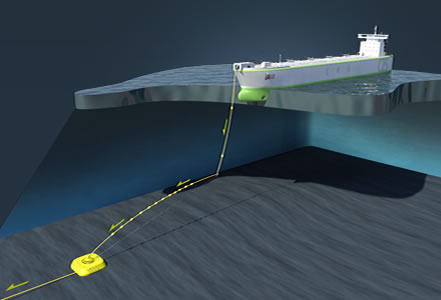
Natural gas has become a popular source of energy worldwide and the use of such is expected to dramatically increase in the next years. Natural gas has gained a wider significance resulting from the sustained high price of oil, the need for security and energy diversification, the rising awareness in a global perspective about the environmental issues, as well as the new gas related technologies.
Natural gas been traditionally been delivered to the market with the help of two proven methods: liquefied natural gas and pipelines. Each of the following alternatives is highly intensive and needs a considerable working terms with regards to the distances and quantities to the market. These two different methods become economical on a specified range of distances and quantities and not on the whole range that actually opens the door to different alternative technologies which have the potential to create development for small quantities to be transported to the specified distance. The most advanced alternative technologies include floating GTL and LNG, gas-to-liquid (GTL), adsorbed natural gas (ADG), natural gas hydrates (NGH), and the compressed natural gas (CNG).
CNG is a natural compressed gas that has the purpose of simplified storage and transport. The gas being compressed into the special gas containment tank (GCT) with a pressure of normally 2,900 up to 3,600 psi (pounds per square inch). The GCT's capacity mainly depends on the tank volume, the composition of the natural gas and its temperature, and the working pressure. GCTs are cylindrical that varies in length and diameter and could be made of a light-weight composite material or steel.
Marine transportation of CNG is another new concept in the field of gas shipping that is at the stage similar to a liquefied natural gas (LNG) for fifty years ago. This mode of transport is being pursued with a great interest and the CNG shipping is now at the threshold of getting commercialized. The technology behind has a large scope for commercial applications in the major worldwide market of natural gas. CNG marine technology is suited for both offshore and onshore reserves that can't be produced because the pipeline solution in uneconomical or because LNG is an option that is too costly.
CNG has a niche between LNG and pipelines. A CNG project is faster to implement compared to LNG. The CNG shipping can monetize stranded gas reserves faster and provide it with a temporary solution. CNG technology is suited for a short to medium distance project. It has an economic range of up to 2, 000 nautical miles for one way. The gas reserves that are needed for a CNG shipping varied depending on the volume in a day that has to be supplied over long distance market. The CNG supply system is being optimized, designed and modelled for every specific project given that the requirements in every project tend to vary. This is helpful in providing a more easy and convenient transport regardless if it is a for short or long distances.







No comments:
Post a Comment